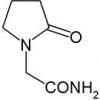The big 'Treating Anxiety Safely and Effectively' thread blacklists Kava Kava as a Gabaergic which should result in counterproductive GABA-a receptor downregulation, but after finding multiple reports (for example, here) of sensitization (rather than the expected desensitization) over long term use I looked into this and beg to differ...
So while Kava Kava extracts are well established to be gabaergics, it seems they aren't agonists at the GABA-a receptor so much as that they potentiate their signal through some other mechanism, either resulting in or as a result of increasing GABA-a receptor density.
I shouldn't have to add that this makes it an incredibly promising substance for the treatment of anxiety and insomnia; something that helps immediately and adds up positively over long term use.
The one nut left to crack is the hepatotoxicity issue reported from western use of Kava extracts. Wikipedia says this has only been known to happen from stem and leaf extracts, however, and that root extracts have a long history of safe use.
Thoughts?
Raza,
Firstly,
thank you for this... You have raised an EXCELLENT question regarding precisely what is KAVA KAVA's mechanism of action with regards to GABA RECEPTORS; and as such I have digged deeper into the matter and I have to agree that my perspective is not entirely accurate, and consequently you have caused me to change it.

However, upon review of the existing scientific evidence up to date, I find that I do not in fact entirely agree with you... wherein IMO either neither of us is correct or we both are... UGH? I hear you say?

Specifically the problem lies with the fact that whilst those two studies, which do indeed seem to report KAVA KAVA inducing UPREGULATION of the GABA RECEPTORS, specifically via INCREASING RECEPTOR DENSITY, there concomitantly exists just as many (if not more) studies that appear to demonstrate that KAVA KAVA is indeed a GABA RECEPTOR AGONIST.
To complicate matters even further I have found some
additional studies that support your perspective.

Consequently, I have concluded that there exists CONFLICTING EVIDENCE and as such we simply cannot say for sure at the present time the full extent of precisely what is and is not KAVA KAVA's mechanism of action with regards to GABA RECEPTORS. Without a doubt
more research is need.

I have a THEORY as to what is going on but hesitate to mention it since it is pure academic conjecture.

As as result, I humbly admit that I was mistaken in placing KAVA KAVA on the 'DEFINITELY TO BE AVOIDED' LIST within my TREATING ANXIETY SAFELY & EFFECTIVELY thread; wherein I will be moving it to the 'POSSIBLY WHAT IS SAFE & EFFECTIVE TO TAKE' LIST.

For you interest, here are the various conflicting studies, which to facilitate understanding I have grouped into what I deem 'POSITIVE', 'NEGATIVE' and 'NEUTRAL' with regards to reported effects on the GABA PATHWAY:
‘POSITIVE’ STUDIES:This study reports that KAVALACTONES (A.K.A. KAVAPYRONES) from KAVA KAVA do not influence the GABAA RECEPTOR via interaction with the BENZODIAZEPINE RECEPTOR (N.B. BENZODIAZEPINE RECEPTORS are allosteric modulatory sites on the GABAA RECEPTORS):Planta Med. 1998 Aug;64(6):504-6.
Influence of genuine kavapyrone enantiomers on the GABA-A binding site.Boonen G, Häberlein H.
SourceDepartment of Pharmaceutical Biology, Philipps-University, Marburg, Germany.
AbstractThe influence of kavapyrones from Piper methysticum Forst. on the GABAA receptor was demonstrated using radioreceptor assays. Both the dienolide yangonin and the genuine enolide enantiomers (+)-kavain, (+)-dihydrokavain, (+)-methysticin, and (+)-dihydromethysticin enhanced the specific binding of [3H]bicuculline methochloride ([3H]BMC). The kavapyrones have been investigated at assay concentrations between 100 microM and 10 nM. (+)-Kavain, (+)-methysticin and (+)-dihydromethysticin showed maximal enhancements of 18% to 28% at a concentration of 0.1 microM, whereas a 100-fold concentration of (+)-dihydrokavain revealed a similar modulatory activity of 22%. In the presence of 1 microM yangonin an increase of about 21% of the specific [3H]BMC binding was observed. Desmethoxyyangonin did not alter the binding behavior of the GABAA-receptor. A structure comparison of desmethoxyyangonin and yangonin indicated that the aromatic methoxy group was of particular importance for the modulatory activity. In contrast, the substitution pattern of the aromatic ring did not influence the modulatory activity of the enolides in a decisive manner. A structure comparison of desmethoxyyangonin and (+)-kavain revealed that an angular lactone ring was an important structure requirement. Both the enolides and the dienolides did not inhibit the specific binding of [3H]flunitrazepan. Thus,
the influence on the GABAA receptor was not based upon an interaction of these kavapyrones with the benzodiazepine receptor.----------------------------------------------------------------------------------------------------------------------
This study (IN VIVO and on HUMANS) found KAVA KAVA to be effective in treating non-psychotic ANXIETY; and reported no instance of WITHDRAWAL SYMPTOMS upon ceasing taking the KAVA KAVA:Phytother Res. 2004 Apr;18(4):297-300.
Kava treatment in patients with anxiety.Geier FP, Konstantinowicz T.
SourceGeriatric Hospital Elbroich, Am Falder 6, 40589 Duesseldorf, Germany.
AbstractIn several clinical trials, mainly conducted with a dose of 300 mg kava extract per day, kava has been employed successfully for the treatment of anxiety disorders.
The goal of the placebo-controlled double-blind outpatient trial was to obtain more information on the dosage range and efficacy of a kava special
extract WS 1490 in patients with non-psychotic anxiety. 50 patients were treated with a daily dose of 3 x 50 mg WS 1490 during a 4-week treatment period followed by a 2-week safety observation phase. In the active treatment group, the total score of the Hamilton anxiety scale (primary efficacy variable), showed a therapeutically relevant reduction in anxiety versus placebo (more than 4 points). In the secondary variables studied, HAMA 'somatic and psychic anxiety' subscales, the Erlangen anxiety, tension and aggression scale (EAAS), the brief personality structure scale (KEPS), the adjective checklist (EWL 60-S) and clinical global impressions scale (CGI), a trend in favour of the active treatment was detectable.
[Kava extract] WS 1490 was well tolerated and showed a safety profile with no drug-related adverse events or post-study withdrawal symptoms. It can be concluded that the applied 150 mg WS 1490 per day is an effective and safe treatment of non-psychotic anxiety syndromes in the described population.
----------------------------------------------------------------------------------------------------------------------
This study (IN VIVO and on HUMANS) reports that KAVA KAVA modulates the GABA PATHWAY without IMPAIRING COGNITION, which implies its mechanism of action is not that of full GABA RECEPTOR AGONIST:Hum Psychopharmacol. 2011 Mar;26(2):102-11. doi: 10.1002/hup.1180. Epub 2011 Mar
16.
Neurocognitive effects of kava (Piper methysticum): a systematic review.LaPorte E, Sarris J, Stough C, Scholey A.
SourceBrain Sciences Institute, University of Technology, Melbourne, Victoria, Australia. emma.laporte@live.com
AbstractRATIONALE: Kava (Piper methysticum) elicits dose-dependent psychotropic effects and thus may potentially deleteriously affect cognitive performance. Clinical trials have assessed the effects of kava on cognition, however, to our knowledge no systematic review has been conducted in this area.
OBJECTIVE: To systematically review the effects of kava on cognition, providing an analysis of the individual study's methodological quality, results and effect sizes.
METHODS: A systematic review was conducted of publications up to June 15th 2010, using the electronic databases MEDLINE, PsychINFO, CINAHL, Web of Science and The Cochrane Library. The search criteria involved kava and cognition related terms, e.g. memory and attention.
RESULTS: Ten human clinical trials met inclusion criteria (acute n = 7, chronic n = 3). One acute study found that kava significantly improved visual attention and working memory processes while
another found that kava increased body sway. One chronic study found that kava significantly impaired visual attention during high-cognitive demand. Potential enhanced cognition may be attributed to the ability of kava to inhibit re-uptake of noradrenaline in the pre-frontal cortex, while
increased body sway may be due to GABA pathway modulation.
CONCLUSIONS:
The majority of evidence suggests that kava has no replicated significant negative effects on cognition.----------------------------------------------------------------------------------------------------------------------
Another study (IN VIVO and on HUMANS) that reports KAVA KAVA does NOT IMPAIR COGNITION, which again implies its mechanism of action is not that of full GABA RECEPTOR AGONIST; but found that KAVA KAVA usage ELEVATED LIVER ENZYMES demonstrating HEPATOTOXICITY (N.B. Whether or not KAVA KAVA is in fact HEPATOTOXIC is a whole other discussion, and this singular study is not conclusive proof of this and should not be taken as such):Neuropsychopharmacology. 2003 Feb;28(2):389-96.
Saccade and cognitive function in chronic kava users.Cairney S, Clough AR, Maruff P, Collie A, Currie BJ, Currie J.
SourceMental Health Research Institute of Victoria, Parkville, Victoria, Australia.
scairney@mhri.edu.au
AbstractKava is an extract from the Piper methysticum Forst. f. plant that has been consumed in the Pacific islands for millennia and more recently, among indigenous populations, in northern Australia and throughout the Western world as an herbal medicine. Through alterations on neuronal excitation, kava induces muscle relaxation, anasthesia, and has anxiolytic properties. There have been several isolated reports of psychotic syndromes, severe choreoathetosis and possible seizures following kava use. However, there is no conclusive evidence that kava interferes with normal cognitive processes. We tested a group of current, ex, and nonkava users among an indigenous population in northern Australia, using saccade and cognitive tests that have proven cross-cultural validity and are sensitive to subtle disruptions of the brain arising from substance abuse or neuropsychiatric illness.
Despite collecting data from among the heaviest reported kava drinkers in the world, we found no impairment in cognitive or saccade function in individuals who were currently heavy kava users (and had been for up to 18 years), nor was there any impairment in individuals who had been heavy kava users in the past but had abstained for longer than 6 months. Current and ex-kava users showed a higher rate of kava dermopathy, lower body mass index, lowered blood lymphocytes and, in addition,
current kava users showed elevated liver enzymes. While there has recently been increasing concern about potentially fatal liver damage attributed to kava use, we have found no evidence of brain dysfunction in heavy and long-term kava users.
----------------------------------------------------------------------------------------------------------------------
These are added to the TWO STUDIES already posted by RAZA (Thank you!), which are as follows: This study (whilst on RODENTS) reports that KAVA KAVA’s GABAergic mechanism of action is due to UPREGULATION of the GABA RECEPTORS:Psychopharmacology (Berl). 1994 Dec;116(4):469-74.
Kavapyrone enriched extract from Piper methysticum as modulator of the GABAbinding site in different regions of rat brain.Jussofie A, Schmiz A, Hiemke C.
Institut für Physiologische Chemie, Universitätsklinikum Essen, Germany.
Regional differences in the
modulation of [3H] muscimol binding to GABAA receptor complexes by kavapyrones, compounds of the rhizome of the plant Piper methysticum which possess sedative activity, were demonstrated using membrane fractions obtained from target brain centers of kavapyrone action: hippocampus (HIP), amygdala (AMY) and medulla oblongata (MED), and from brain centers outside the main kavapyrone effects as frontal cortex (FC) and cerebellum (CER). The kava extract enhanced the binding of [3H] muscimol in a concentration-dependent manner with maximal potentiation of 358% over control in HIP followed by AMY and MED (main target brain centers). Minimal stimulation was observed in CER followed by FC. In contrast, apart from CER, the potency of kavapyrones was similar in the brain areas investigated with EC50 values ranging between 200 and 300 microM kavapyrones.
Scatchard analysis revealed that the observed effects of kavapyrones were due to an increase in the number of binding sites (Bmax), rather than to a change in affinity. At a kavapyrone concentration of 500 microM the order of enhancement in Bmax was HIP = AMY > MED > FC > CER. When kavapyrones are included together with pentobarbital or HPO the two classes of compounds produced a more than additive, i.e., synergetic effect on [3H] muscimol binding.
Our findings suggest that one way kavapyrones might mediate sedative effects in vivo is through effects on GABAA receptor binding.-------------------------------------------------------------------------------------------------------------------------
This study (whilst also on RODENTS) reports that KAVA KAVA’s GABAergic mechanism of action is due to UPREGULATION of the GABA RECEPTORS:Arzneimittelforschung. 1991 Jul;41(7):673-83.
The action profile of D,L-kavain. Cerebral sites and sleep-wakefulness-rhythm inanimals.[Article in German]
Holm E, Staedt U, Heep J, Kortsik C, Behne F, Kaske A, Mennicke I.
SourceAbteilung für Pathophysiologie, I. Medizinische Klinik Mannheim, Universität
Heidelberg, Mannheim.
EXTRACT FROM FULL TEXT:Kavalactones increase GABA receptor density in specific areas of rodent brain (especially hippocampus and amygdala) suggesting GABA-a receptor mediation of the sedative effects of kava, although earlier studies did not find GABA or benzodiazepine receptor binding. German EEG studies have confirmed the limbic structures, especially the amygdylar complex, mediate the sedative effects of kava
(Holm E, et al.
Arzneimittelforschung 1991 Jul;41(7):673-683.)
----------------------------------------------------------------------------------------------------------------------
‘NEGATIVE’ STUDIES:This study refers to KAVA KAVA as being a GABA RECEPTOR AGONIST:J Ethnopharmacol. 2005 Aug 22;100(1-2):108-13.
Potential for interaction of kava and St. John's wort with drugs.Singh YN.
SourceCollege of Pharmacy, South Dakota State University, Brookings, SD 57007, USA.
yadhu.singh@sdstate.edu
AbstractThe present interest and widespread use of herbal remedies has created the possibility of interaction between them and pharmaceutical drugs if they are used simultaneously. Before the recent reports of apparent hepatotoxicity associated with its use, kava (Piper methysticum Forst. F.), was one of the top 10 selling herbal remedies in Europe and North America. This adverse effect was not previously encountered with the traditional beverage which was prepared as a water infusion in contrast to the commercial products which are extracted with organic solvents. Kavalactones, the active principles in kava, are potent inhibitors of several of the CYP 450 enzymes, suggesting a high potential for causing pharmacokinetic interactions with drugs and other herbs which are metabolized by the same CYP 450 enzymes. Furthermore, some
kavalactones have been shown to possess pharmacological effects, such as blockade of GABA receptors and sodium and calcium ion channels, which may lead to pharmacodynamic interactions with other substances which possess similar pharmacological proprieties. St. John's wort (Hypericum perforatum L.), used extensively for the treatment of mild to moderate clinical depression, has long been considered safer than the conventional pharmaceutical agents. However, its ability, through its active constituents hypericin, pseudohypericin and hyperforin, to induce intestinal P-glycoprotein/MRD1 and both intestinal and hepatic CYP3A4 enzyme, could markedly reduce the distribution and disposition of their co-substrates. In addition, St. John's wort is a potent uptake inhibitor of the neurotransmitters serotonin, norepinephrine and dopamine all of which have a role in mood control. Consequently, the very real potential for a pharmacodynamic interaction between the herb and pharmaceutical drugs which share this mechanism of action and, like St. John's wort, are used for mood elevation. However, presently there is very little evidence to substantiate actual pharmacokinetic and/or pharmacodynamic interaction between drugs and kava or St. John's wort. This review provides a brief overview of the existing data on interactions of kava and St. John's wort with pharmaceutical agents and as a result reveals the urgent need for detailed investigations to identify clinically significant interactions for these herbal remedies that have the potential to cause adverse effects.
----------------------------------------------------------------------------------------------------------------------
This study (whilst IN VITRO and on RODENTS) indicates KAVA KAVA to exert AGONISM of the GABA-A RECEPTOR specifically, but not the GABA-B RECEPTOR:Planta Med. 2002 Dec;68(12):1092-6.
Kavalactones and dihydrokavain
modulate GABAergic activity in a rat
gastric-brainstem preparation.
Yuan CS, Dey L, Wang A, Mehendale S, Xie JT, Aung HH, Ang-Lee MK.
SourceTang Center for Herbal Medicine Research, The Pritzker School of Medicine,
University of Chicago, Chicago 60637, USA. cyuan@midway.uchicago.edu
AbstractUsing an in vitro neonatal rat gastric-brainstem preparation,
the activity of majority neurons recorded in the nucleus tractus solitarius (NTS) of the brainstem were significantly inhibited by GABA A receptor agonist, muscimol (30 microM), and this inhibition was reversed by selective GABA A receptor antagonist, bicuculline (10 microM). Application of kavalactones (300 microg/ml) and dihydrokavain (300 microM) into the brainstem compartment of the preparation
also significantly reduced the discharge rate of these NTS neurons (39 % and 32 %, respectively,
compared to the control level), and this reduction was partially reversed by bicuculline (10 microM). Kavalactones or dihydrokavain induced inhibitory effects were not reduced after co-application of saclofen (10 microM; a selective GABA B receptor antagonist) or naloxone (100 nM; an opioid receptor antagonist). Pretreatment with kavalactones (300 microg/ml) or dihydrokavain (300 microM) significantly decreased the NTS inhibitory effects induced by muscimol (30 microM), approximately from 51 % to 36 %.
Our results demonstrated modulation of brainstem GABAergic mechanism by kavalactones and dihydrokavain, and suggested that these compounds may play an important role in regulation of GABAergic neurotransmission.
----------------------------------------------------------------------------------------------------------------------
This study also indicates that KAVA KAVA is a GABA-A RECEPTOR AGONIST:CNS Drugs 2002;16(11):731-43.
Therapeutic potential of kava in the treatment of anxiety disorders.Singh YN,
Singh NN.
SourceCollege of Pharmacy, South Dakota State University, Brookings, South Dakota 57007, USA. yadhu_singh@sdstate.edu
AbstractAnxiety disorders are among the most common psychiatric disorders that affect all age groups of the general population. Currently, the preferred treatment is with pharmacological drugs that have antidepressant or anti-anxiety properties. However, these agents have numerous and often serious adverse effects, including sedation, impaired cognition, ataxia, aggression, sexual dysfunction, tolerance and dependence. Withdrawal reactions on termination after long-term administration are also a major limiting factor in the use of these agents. Herbal remedies, including kava (Piper methysticum), have been shown to be effective as alternative treatments, at least in mild to moderate cases of anxiety. Kava is a social and ceremonial herb from the South Pacific. It is available in the west as an over-the-counter preparation. Its biological effects, due to a mixture of compounds called kavalactones, are reported to include sedative, anxiolytic, antistress, analgesic, local anaesthetic, anticonvulsant and neuroprotective properties.
The pharmacological properties of kava are postulated to include blockade of voltage-gated sodium ion channels, enhanced ligand
binding to gamma-aminobutyric acid (GABA) type A receptors, diminished excitatory neurotransmitter release due to calcium ion channel blockade, reduced neuronal reuptake of noradrenaline (norepinephrine), reversible inhibition of monoamine oxidase B and suppression of the synthesis of the eicosanoid thromboxane A(2), which antagonises GABA(A) receptor function. Clinical studies have shown that kava and kavalactones are effective in the treatment of anxiety at subclinical and clinical levels, anxiety associated with menopause and anxiety due to various medical conditions. Until recently, the adverse effects attributed to kava use were considered mild or negligible, except for the occurrence of a skin lesion. This disorder, called kava dermopathy, occurs only with prolonged use of large amounts of kava and is reversible on reduced intake or cessation. Rare cases of interactions have occurred with pharmaceutical drugs that share one or more mechanisms of action with the kavalactones. In the past few years, about 35 cases of severe liver toxicity associated with kava intake have been reported in Europe and the US. However, a direct causal relationship with kava use has been difficult to establish in the majority of the cases, and there is insufficient evidence to implicate kava as the responsible agent. Nevertheless, until further research clarifies any causality, kava should be used with caution.
-----------------------------------------------------------------------------------------------------------------------
This study (whilst IN VITRO but on HUMANS) also indicates that KAVA KAVA is a GABA-A RECEPTOR AGONIST:Planta Med. 2001 Jun;67(4):306-11.
Interaction of various Piper methysticum cultivars with CNS receptors in vitro.Dinh LD,
Simmen U,
Bueter KB,
Bueter B,
Lundstrom K,
Schaffner W.
SourceInstitute of Pharmaceutical Biology, University of Basel, Witterswil, Switzerland.
AbstractMethanolic
leaf and root extracts of the Hawaiian kava (Piper methysticum Forst.) cultivars, Mahakea, Nene, Purple Moi and PNG, were tested on binding affinities to CNS receptors including GABAA (GABA and benzodiazepine binding site), dopamine D2, opioid (mu and delta), serotonin (5-HT6 and 5-HT7) and histamine (H1 and H2). HPLC analysis was carried out in order to determine the amount of the main kavalactones kavain, 7,8-dihydrokavain, methysticin, 7,8-dihydromethysticin, yangonin and 5,6-demethoxyyangonin.
The most potent binding inhibition was observed for leaf extracts to GABAA receptors (GABA binding site) with IC50 values of approximately 3 micrograms/ml, whereas root extracts were less active with IC50 values ranging from 5 micrograms/ml (Nene) to 87 micrograms/ml (Mahakea). Since the leaf extracts generally contained lower amounts of the kavalactones than the root extracts, there might exist additional substances responsible for these activities. Leaf extracts also inhibited binding to dopamine D2, opioid (mu and delta) and histamine (H1 and H2) receptors more potently than the corresponding root extracts with IC50 values ranging from 1 to 100 micrograms/ml vs. > or = 100 micrograms/l, respectively. Significant differences in the potential of binding inhibition were also observed between cultivars. Binding to serotonin (5-HT6 and 5-HT7) and benzodiazepine receptors was only weakly inhibited by both root and leaf extracts of all four cultivars. In conclusion,
our investigation indicates that the GABAA, dopamine D2, opioid (mu and delta) and histamine (H1 and H2)
receptors might be involved in the pharmacological action of kava extracts. Since the cultivars contained similar amounts of kavalactones, while their pharmacological activities differed markedly, other constituents may play a role in the observed activities. Additionally, leaves generally exhibited more potent binding inhibition than roots, therefore leaf of P. methysticum might be an interesting subject for further pharmacological studies.
--------------------------------------------------------------------------------------------------------------------
‘NEUTRAL’ STUDIES:This study (whilst IN VITRO but on HUMANS) in my opinion pretty much ‘hits the nail on the head’ so to speak, in that it reports that the scientific evidence supporting whether or not KAVA KAVA is a GABA RECEPTOR AGONIST is conflicting:Altern Med Rev. 1998 Dec;3(6):458-60.
Piper methysticum (kava kava).[No authors listed]
AbstractPiper methysticum (kava kava) is a plant native to the Pacific Island region, and has been used ceremonial for thousands of years. The active ingredients are a group of substances know as kava lactones (AKA kava pyrones). Four lactones in kava have been found to have significant analgesic and anesthetic effects via non-opiate pathways. Kava's most popular application is as a natural anxiolytic, comparing favorably in several studies to a number prescription medications, including benzodiazepines.
CNS effects seem to be mediated by several mechanisms. Studies have been conflicting regarding its GABA-receptor-binding capacity, although this has been found to occur in some studies. In vitro kava has been found to block norepinephrine uptake. It also has some anti-convulsant capabilities, which appear to be mediated by Na+ channel receptor sites. The therapeutic dosage is in the range of 50-70 mg kava lactones three times daily. The most common side effect, usually seen only with long-term, heavy usage of the herb, is a scaly skin rash called "kava dermopathy." It has also been know to potentiate other medications such as barbiturates and Xanax.

























































